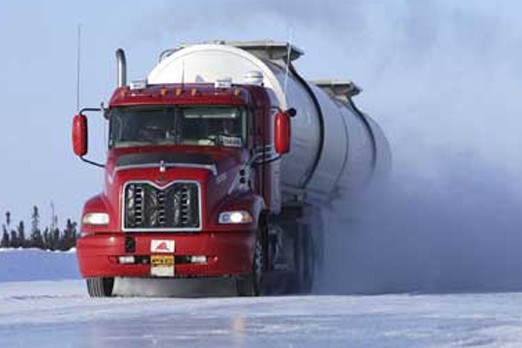Nishnawbe Aski Nation Grand Chief Stan Beardy says delays building this year’s winter ice roads in Manitoba are a cause for concern in Ontario, and should spark the government to speed up plans to build permanent all-weather roads in the region.
Manitoba First Nations leader are laying the blame on climate change for shortening the winter season in the province. The lack of ice roads means higher prices in the remote, mostly fly-in communities, where Beardy said costs can be up to four times for basic necessities as most of the rest of Canada.
Beardy said Ontario hasn’t suffered quite as severely as its neighbour to the west. For example, he said, light traffic is already accessing winter roads near Muskrat Dam, his home community.
“So I’m optimistic we’ll have a good winter road system again this year,” Beardy said Thursday. “But definitely on the long term, we’re looking at permanent road systems, and that’s what the chiefs are working on currently, to identify the routes that need to be worked out.”
The Grand Chief acknowledged it will be expensive to construct a year-round ground transportation network to northern communities.
The cost of the winter roads program is shared between the province and First Nations, with the federal government providing money to help the latter offset its contribution. In 2009-10, for example, Ottawa chipped in $4.2 million for winter roads construction and maintenance in the Kenora District alone. Beardy said there is also room for private-sector contributions to build all-weather roads.
NAN oversees 49 First Nations throughout Northwestern Ontario, stretching from the James Bay coast to the Manitoba border. Thirty of those communities rely on the winter roads to ship heavy goods, such as building materials and diesel fuel, used to provide electricity to the reserves.
Beardy said from his perspective, the best routes would follow ridges in the Canadian Shield, mainly traveling from east to west, connecting with established routes where possible.
Some of the work has already started, he said.
“I know between Muskrat Dam and Bearskin Lake, 50 miles, they’re building an all-weather road between the two communities as we speak.”
The roads, all-weather or temporary, are paramount to the survival of Ontario’s remote communities, Beardy added, but also to future development in the region.
“To fly stuff by air freight, as compared to the ground, the difference is roughly three-and-a-half to four times. So the winter road system is very crucial to the well-being of the First Nations of the Far North,” he said.
“I think we’re looking at the opening of the North. I think we understand the government is not going to invest millions of dollars to build all-weather roads for us. But I think we all understand to access the resources of the North, all-weather roads would be the way to do it,” Beardy said.
“I think what we’re telling the government is that to build the all-weather roads with a collaborative approach is an investment to all of us.”
MPP Michael Gravelle (Lib., Thunder Bay-Superior North), called for provincial reaction, wasn’t immediately available on Thursday for comment.
One solution Beardy doesn’t want to see enacted is the use of freight airships, which last month in a report on the needs of Canada’s North, the Conference Board of Canada suggested be investigated.
The report, authored by Mara Bristow and Vijay Gill, identifies gaps in the North’s transportation infrastructure, provides a detailed case study of Churchill, Man. and also calls for investment in all-season roads and railway infrastructure.
It then acknowledges the difficulty in doing so.
“Building better connections to and between remote Northern communities is costly,” the authors write in a release.
“The Northern climate adds to the ongoing costs of operating and maintaining infrastructure; while the low population density and low shared use of the infrastructure leads to even higher measures of cost per resident. Given the costs, transportation infrastructure may turn out be the decisive factor in private investment decisions, especially for large, capital-intensive and export-oriented projects.”
Beardy said the hybrid airships, which will be used in the Northwest Territories on a trial basis, are simply another way for companies to escape the consultation process.
“We expect to fully participate. If it’s an economic activity, we need the key players there. If you’re bringing in air balloons, air ships, by third parties, without our participation, that’s going to impact our opportunity to build an economic base. So definitely we have concerns with that,” Beardy said.
Sign in or register
- Messages
- Post a Listing
- Your Listings
- Your Profile
- Your Subscriptions
- Your Likes
- Your Business
- Support Local News
- Payment History
Registered Users
Already have an account?
New Users
Create a free account.
